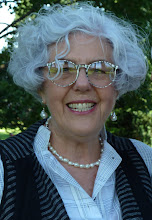Planning to travel in the Developing world requires a certain degree of flexibility! I began planning last year to join a small of travelers to Tibet for a month long trip. The itinerary was chosen by the tour leader and our guide in China and set in place. Chinese visas were in process when, in April, a major earthquake struck the city of Yushu and one of the areas we were to visit was closed to tourists. Plans change. Our Chinese guide created a new itinerary for us: Beijing, Kunming, Lijiang and Zhongdian were to replace our plans to attend the annual Horse Festival in the area around Yushu.
Almost 10 years ago Peter and I had visited Kunming, Lijiang and Zhongdian on our way to Deqin in Eastern Tibet. Kunming was not our favorite city - but we enjoyed a couple of days there. In the original, old part of the city we found Lijiang to be a quiet sleepy town where you could wander the cobblestone streets admiring the traditional architecture and pause in a cafe for a quiet cup of tea or a meal.
Zhongdian we thought at that time was one of the more soulless places we had ever visited. One dirt road entered a sad, dusty, small city where we were aware of the military and police presence for the first time. Food was terrible and the hotel dismal. We were happy to leave. Zhongdian's only saving grace was a visit to an old monastery, perched on a hillside outside the city, saved from destruction during the Cultural Revolution.
At that time the Chinese government had just renamed that part of the country - Shangri-la province! Huge billboards announced the re-naming as we made our way up a single lane, boulder strewn, precipitous road to Deqin. Although the scenery was spectacular the naming Shangri-la had a hollow ring ring to it.
Eight years later ... accompanied by my daughter Amy, the changes I experienced were phenomenal. Kunming was larger, more polluted metropolis and the pall of coal smoke and other air quality contaminants now hung over the city all the time. A "Tea University" visit provided information and tea sampling at a much higher level of sophistication that our prior visits to one of the many tea shops of the city. Yunan province is a famed tea growing area. One "cake" of tea below - $329 USD! Serious stuff, tea, in this part of the world.
At the University for Minorities, also in Kunming, a beautiful new museum has been constructed ( in 2008) to display the collections of clothing and artifacts which we had previously seen packed into dusty old glass fronted cupboards with no identifiers. I was delighted to see the articles so well curated and displayed.
Lijiang felt like a low grade carnival with the quiet meandering streets crowded with loud, Chinese tourists who push you out of the way rather than walk around you! And umbrellas as weapons ( it was raining) make for challenges when most of the people are shorter than you! The once quiet lovely shops selling items particular to the Naxi (pron. Nashi) culture had all been replace by cheap junky tourist items: how many fake "pashmina" shawl selling shops can a city support. The only quiet time was at 7am when Amy and I walked the blissfully quiet streets to the hotel where we were having breakfast.

Peter and I had attended an evening performance by the only living, traditional Dongba shaman - I recall he was 82 at that time. Several of us from our group attended the 2010 "show". It was terrible - the stage filled with aged men sitting passively with their musical instruments, dressed in a Chinese version of what they thought traditional Naxi clothes were. Amy and I left when we couldn't stand anymore. Our Tibetan guide in Lijiang was exceptional: knowledgeable & charming.
Zhongdian must have trebled in size - most of the roads are paved and the military was visible everywhere. (There was a Tibetan uprising here in 2008 and apparently freedoms have been greatly reduced.) Our hotel was opposite the hospital and we were intrigued that it was owned by an Aviation company! Amy and I walked the small streets of the remaining section of the original city where cars were not allowed and one of my treasured purchases, of a small string of green beads cut from stone, was from a Black Yi woman in the marketplace in the old section.
We succumbed to our last "show" ... guaranteed to be Tibetan by our guide in Zhongdian ... and found ourselves in the midst of a Hollywood-styled spectacular, attended by very loud (they talked loudly through every performance) groups of Chinese tourists. We left that one early too.
What we had been doing for these first days was gradually ascend to higher and higher elevations: we were relieved that no one in the group had experienced any serious effects from the altitude which was by then 10,400Feet.
Our next stop - Lhasa - 11, 450 feet above sea level!














